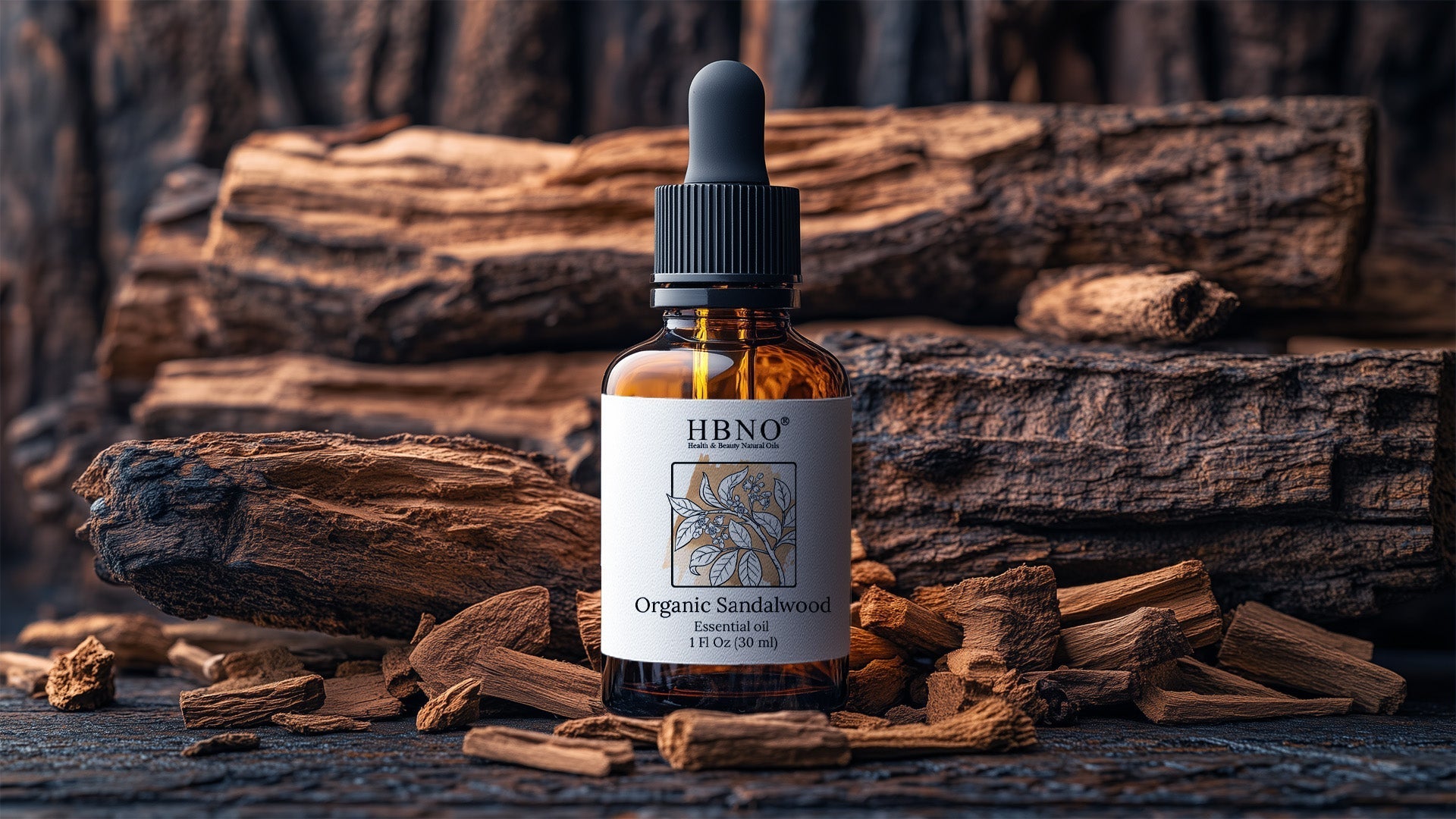
Sandalwood Oil for Hair: Benefits for Grey Hair, Hair Loss & Growth
Sandalwood oil, valued for its smooth texture and distinct aroma, is often explored in hair care for its potential to support growth and manage dryness. Some people include it in scalp massages, while others blend it with oils like jojoba or grapeseed for added flexibility. Its role in pre-wash treatments or leave-in mixes makes it a versatile choice.
Whether you're addressing breakage or simply refreshing your routine, sandalwood essential oil is a widely used option. This guide covers common uses, perceived benefits, and safety tips to help you use it more confidently in everyday hair care.
Key Benefits of Sandalwood Oil for Hair Growth
1. Scalp Hydration and Balance
A scalp that is well-moisturized can create a cleaner base for hair care routines. Sandalwood oil is typically diluted for gentle massages on the scalp. This technique can improve the grooming regimen and promote a consistent feel throughout the scalp. When used with a carrier oil, sandalwood oil becomes easier to distribute and incorporate into a weekly routine.
2. Appearance of Fuller Hair
Sandalwood oil is sometimes applied by individuals who aim to support the appearance of thicker strands. Regular use as part of a routine may assist in minimizing breakage caused by handling or styling. When mixed with oils like jojoba or almond, it can contribute to a unique approach in preserving the hair's overall look and texture.
3. Hair Texture and Manageability
Managing texture is a key part of everyday hair care. Sandalwood oil is occasionally used in small amounts to help with smoother styling. When paired with base oils, it can be applied along the lengths of the hair to support a sleeker finish, which may be useful for those addressing flyaways or dryness due to heat styling or weather changes.
Sandalwood Oil Uses for Hair Care
1. Daily Scalp Massage
A common approach includes blending sandalwood oil with a carrier oil such as coconut oil, jojoba, or almond oil and applying it through a gentle scalp massage. This method is often part of a regular routine aimed at maintaining the scalp's condition. The blend spreads easily, making it suitable for short or long sessions depending on personal preference.
2. Overnight Oil Routine
Sandalwood oil is sometimes used in an overnight routine, especially when mixed with other oils like argan or rosemary essential oil. This approach consists of applying the oil blend to the scalp and covering the hair with a cloth or cap. In the morning, it is usually washed out during your shower, making it a good choice for those wanting a more intense conditioning experience.

3. Leave-in Oil Serum
When grooming daily, a few drops of diluted sandalwood oil can be applied to damp or towel-dried hair. Many individuals employ this technique to control unruly strands or to add a subtle and lingering aroma. It mainly targets the ends of the hair to prevent any heaviness near the roots.
4. As Part of DIY Hair Masks
Sandalwood oil is sometimes integrated into homemade hair masks. Common ingredients like yogurt, aloe vera, or natural conditioners serve as the base, allowing the oil to contribute to a wider conditioning mix used during weekly treatments.
Sandalwood Oil and Hair Challenges
1. Grey Hair Appearance
When addressing the look of grey hair, sandalwood oil may be mixed with traditional oils like amla or bhringraj. These combinations are often used in daily or weekly routines to promote a more uniform look across hair strands.
2. Hair Loss and Thinning Hair
In some practices, sandalwood oil for hair growth is applied with gentle massage techniques. This approach is used especially on thinning areas of the scalp, often paired with a carrier oil to make distribution easier.
3. Hair Breakage and Dryness
Those experiencing dry, brittle strands or split ends may apply sandalwood oil in small amounts. When added to a base oil, it can help coat the ends of hair, supporting manageability and helping reduce visible dryness with regular use.

Precautions Before Using Sandalwood Oil for Hair
1. Always Dilute with a Carrier Oil
Sandalwood essential oil is highly concentrated. Before applying it to the scalp or hair, it should be diluted with a carrier oil such as jojoba, coconut, or almond oil. This reduces the chance of irritation and makes applying it smoother.
2. Perform a Patch Test
Before using sandalwood oil for hair, apply a small amount of the diluted mixture to a small area of skin, like the inner arm. Wait 24 hours to check for any visible reactions. This simple step can help identify sensitivity early.
3. Avoid Contact with Eyes
Keep sandalwood oil away from the eyes, as essential oils may cause discomfort or stinging. If accidental contact occurs, rinse thoroughly with clean water.
Final Thoughts
Sandalwood oil for hair growth continues to be part of many routines focused on consistent, mindful care. Its use in various practices-from scalp application to lightweight blending with other oils-has made it a familiar option for those who seek non-heavy alternatives. Whether you're managing dry ends, caring for your scalp, or simply incorporating new steps into your grooming habits, sandalwood oil may serve as a flexible addition to your regimen.
For those interested in exploring trusted sources of essential oils, HBNO offers a variety of options. While sandalwood oil is appreciated for its texture and application range, it's important to approach any essential oil with care. Always test new products in small amounts, and consider speaking with a professional before making changes to your regular routine.
References:-
-
This simple practice improves circulation to the scalp which can help promote healthy hair growth
-
sandalwood oil also helps improve hair texture and gives a healthy shine
-
The oil's smooth texture makes it ideal for scalp massages, promoting circulation and nourishing the scalp
-
By massaging the oil into the scalp, you can help improve circulation, which may promote better hair follicle function